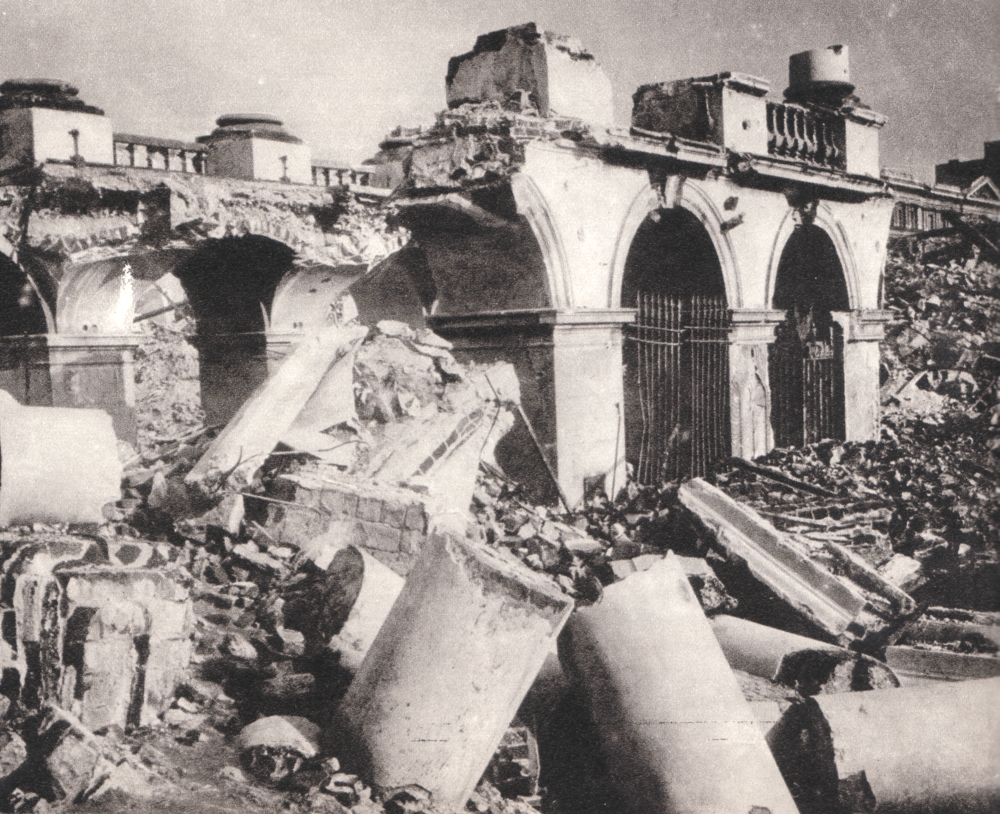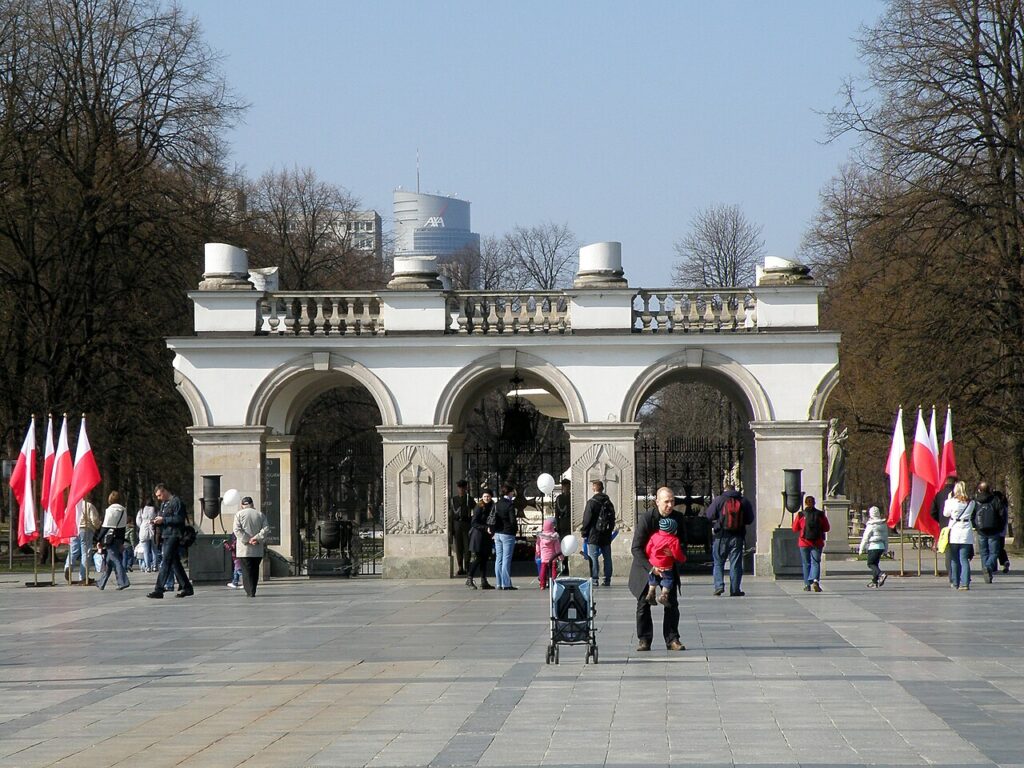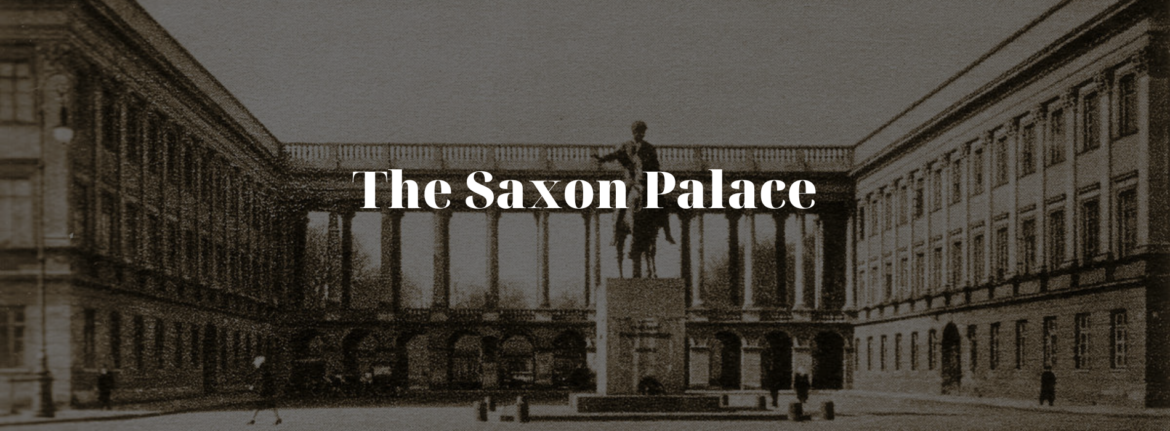The Saxon Palace (Pałac Saski) in Warsaw is one of the most iconic and historically significant buildings in Poland’s capital. Its story reflects the city’s turbulent past, from its grandeur during the 18th century to its complete destruction during World War II. Today, efforts are underway to reconstruct the palace, aiming to restore an important piece of Poland’s architectural and cultural heritage.
Origins and Early History
The origins of the Saxon Palace date back to the early 17th century, when the location was occupied by a smaller noble residence known as the Morsztyn Palace. It belonged to the influential Morsztyn family until it was acquired by King Augustus II the Strong in the early 18th century. As the ruler of Poland and the Elector of Saxony, Augustus II sought to transform Warsaw into a European capital that reflected the grandeur of other royal cities.
Between 1713 and 1748, the palace underwent extensive reconstruction, adopting a Baroque style inspired by Saxon architecture. It became a key element of the Saxon Axis, an urban planning project that aligned key buildings along a central axis, enhancing the prestige of Warsaw’s cityscape. During this period, the palace served as a royal residence and an administrative center, hosting important state functions and courtly events.


The Palace in the 19th and Early 20th Century
Following Poland’s partitions in the late 18th century, the Saxon Palace lost its status as a royal residence. The building changed hands multiple times and was repurposed for various governmental and military functions. In the 19th century, it housed the General Staff of the Polish Army, further cementing its importance in national affairs.
One of the most famous elements of the palace during this period was the colonnade, which connected two wings of the building. Beneath this colonnade stood the Tomb of the Unknown Soldier, established in 1925 as a tribute to Poland’s fallen soldiers. This memorial remains one of the most sacred sites in Poland, even after the destruction of the Saxon Palace.
Destruction During World War II
Like much of Warsaw, the Saxon Palace was completely destroyed during World War II. In 1944, following the Warsaw Uprising, German forces systematically demolished many of the city’s landmarks, including the palace. By the end of the war, only fragments of the building remained, with the Tomb of the Unknown Soldier being the only surviving part of the colonnade.
Despite its destruction, the memory of the palace persisted in the collective consciousness of Warsaw’s residents. Many hoped for its reconstruction, but due to post-war political and economic conditions, the palace was never rebuilt during the communist era. Instead, its former location became an open square known as Piłsudski Square, used for state ceremonies and public gatherings.
Plans for Reconstruction
The idea of reconstructing the Saxon Palace gained serious momentum in the 21st century. In 2006, the Polish government announced plans to rebuild the palace, but the project faced financial and bureaucratic delays. It wasn’t until 2021 that the initiative was officially revived with a firm commitment to reconstruct the palace as part of a broader effort to restore Warsaw’s historical landscape.
The reconstruction aims to faithfully recreate the exterior of the Saxon Palace while adapting its interior for modern use. The planned functions of the rebuilt palace include housing governmental institutions, cultural spaces, and possibly a museum showcasing the history of the site.
The Saxon Palace’s Legacy
The Saxon Palace holds deep symbolic value for Warsaw and Poland as a whole. It represents the city’s resilience and the nation’s ongoing efforts to reclaim and honor its historical heritage. If completed, the reconstruction of the palace will not only restore an architectural masterpiece but also reinforce the continuity between Poland’s past, present, and future.
The return of the Saxon Palace to Warsaw’s skyline will be a powerful reminder of the city’s rich history, the tragedies it has endured, and the determination of its people to rebuild what was lost.
